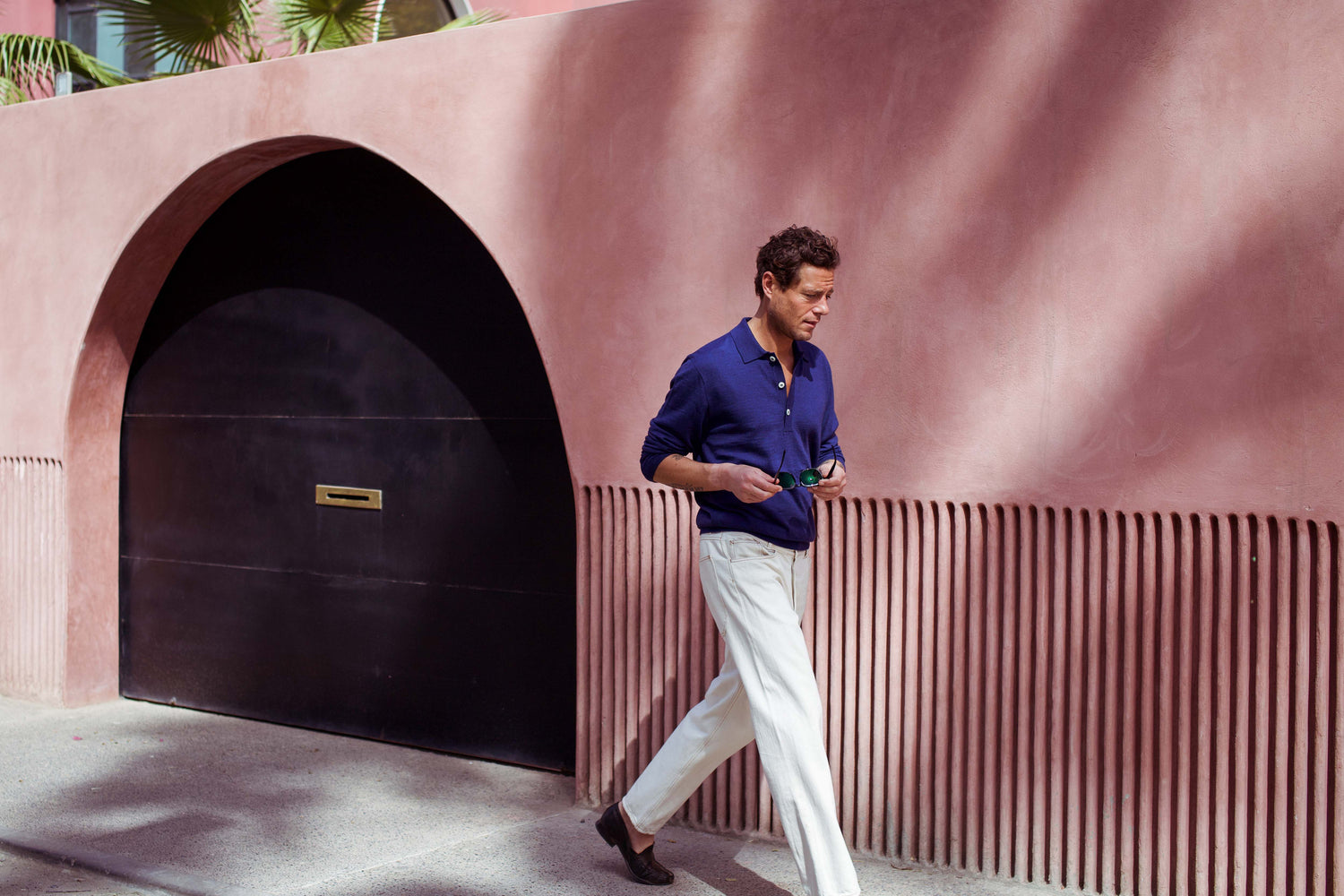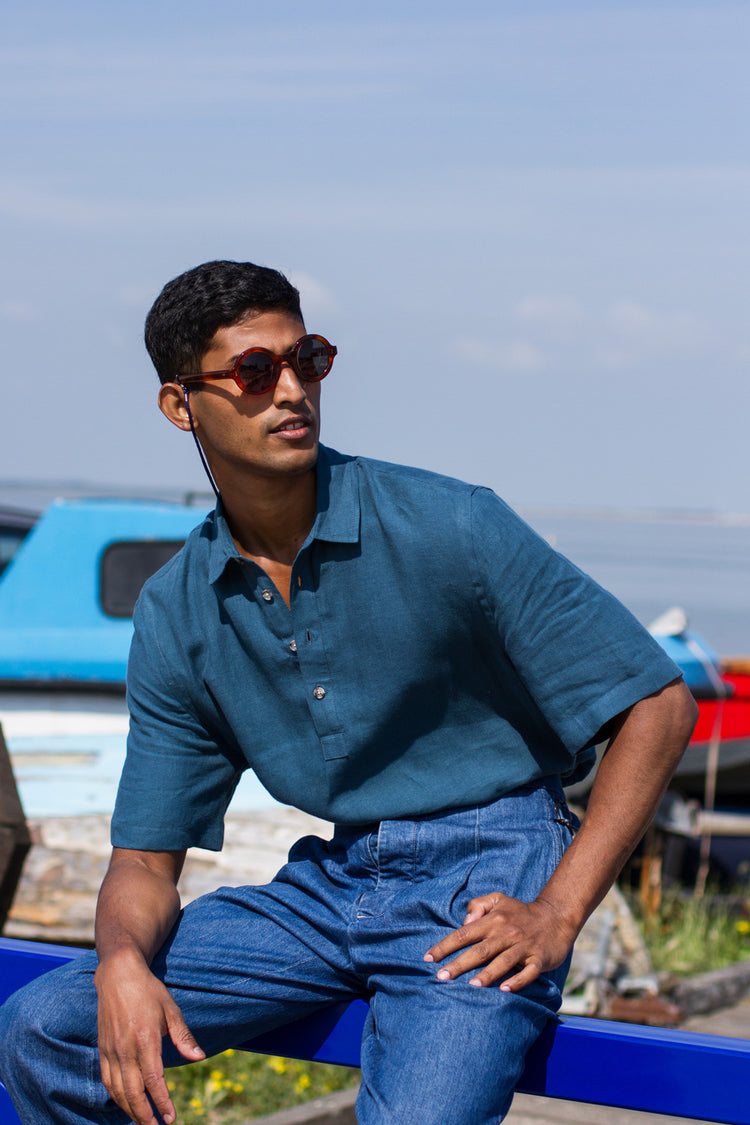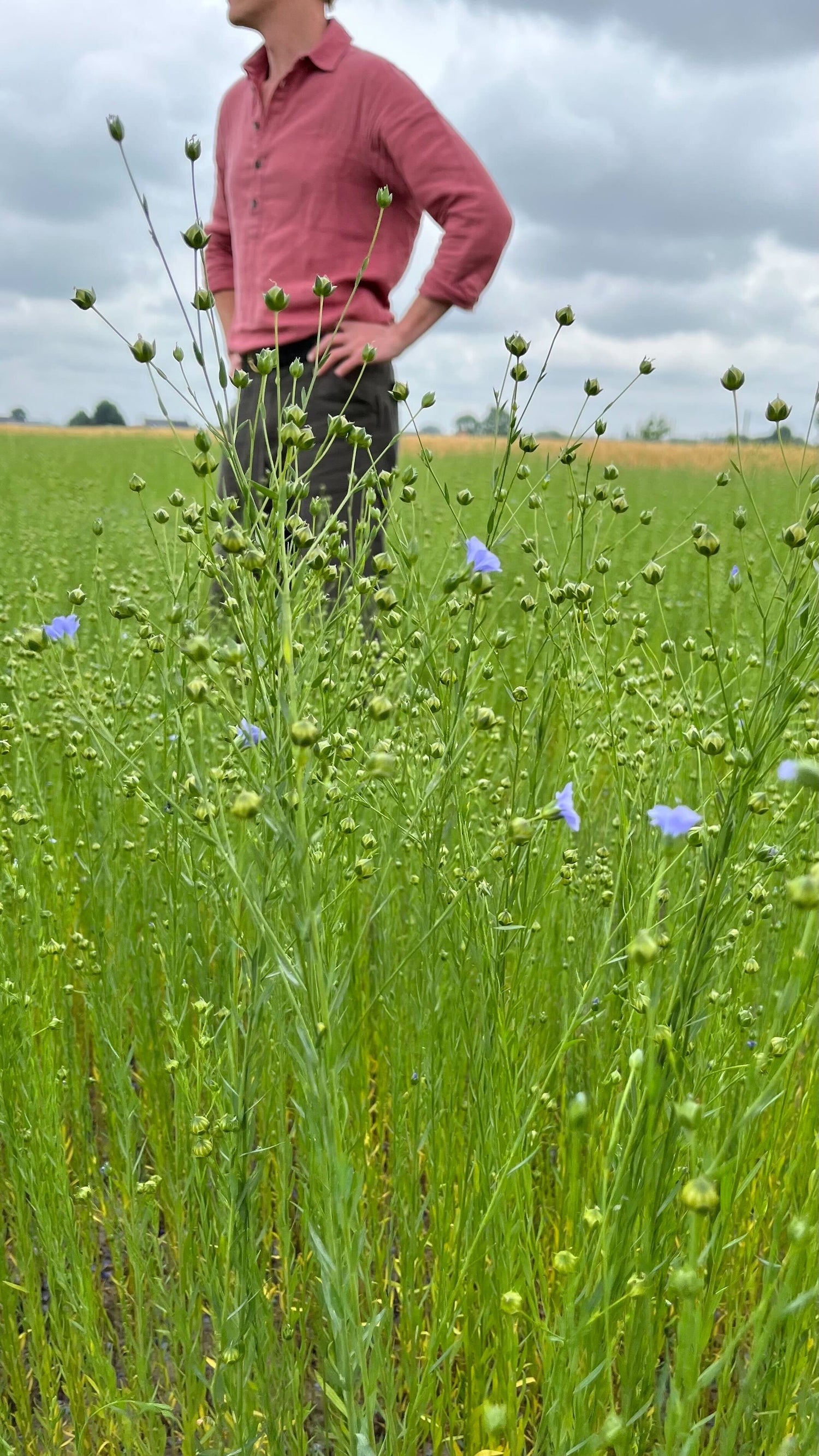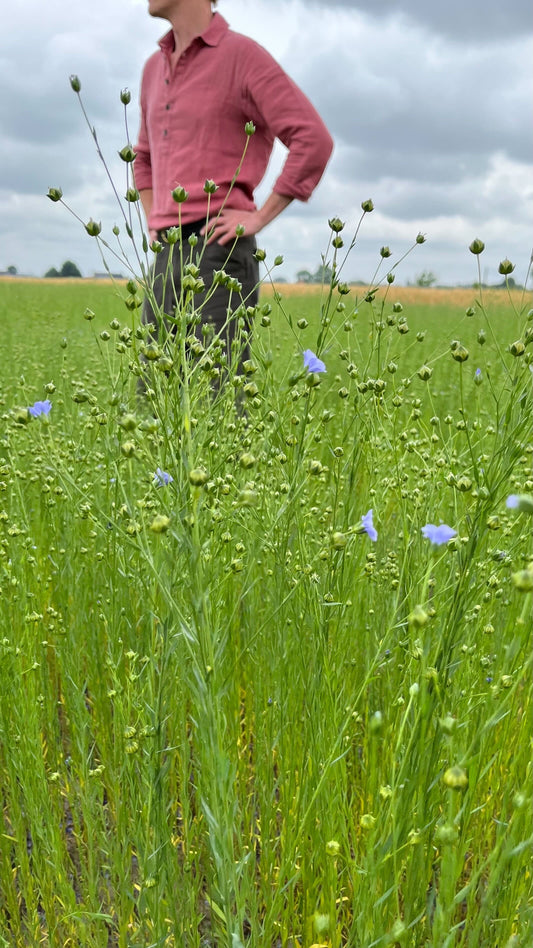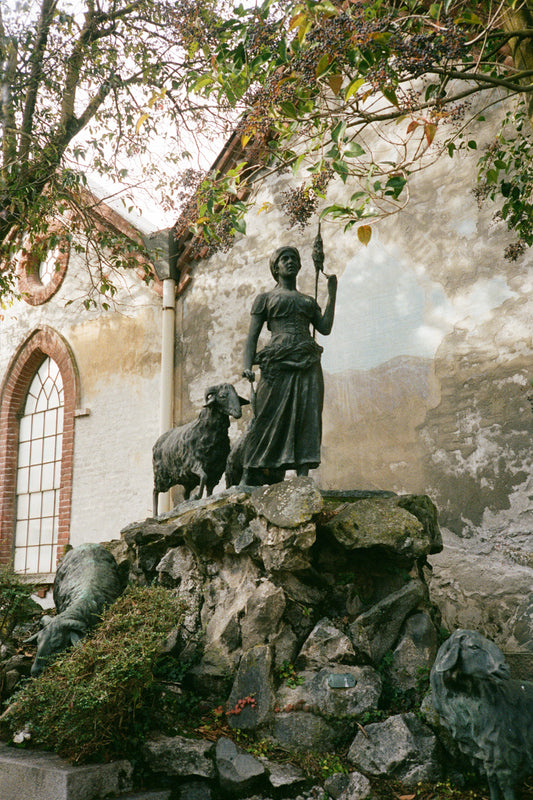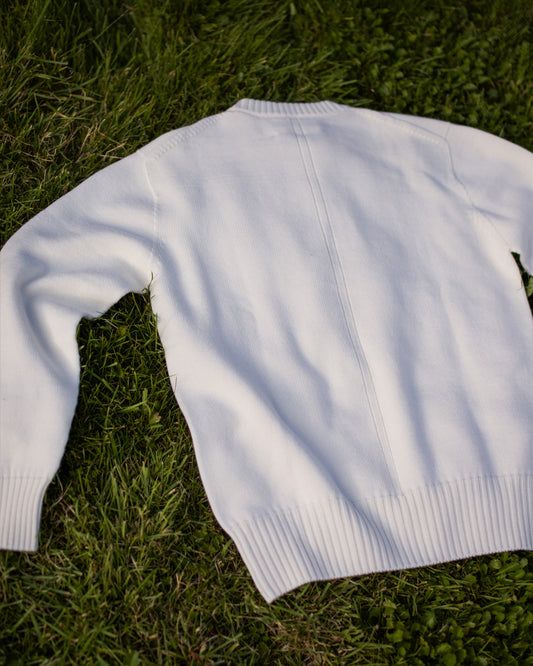When people talk about provenance, it’s not always entirely clear what they mean. When we refer to the provenance of our clothing, we’re looking to the very beginning of its existence. The fields where the actual flax plants grow, and the intricate stages of turning flax plant fibres into the high quality linens that will eventually end up in our clothing.
And rather than just take someone else’s word for it, we always like to see the process with our own eyes. Which is why we jumped on a train to Lilles to visit West Flanders in Belgium, where Masters of Linen™accredited mill, Libeco, do their thing. With flax crops within sight of the factory itself, it really is a pocket of hyper-concentrated linen production. They also happen to be among the world’s very best linen producers.
When it comes to high quality linen, Libeco is at the top of the tree. Their focus on turning out an impossibly broad selection of linens is only matched by their uncompromising approach to quality and dedication to making their fabrics with as little impact as possible. Conscientious, meticulous, and always pushing the boundaries - the holy trinity that any brand looks for in a mill, if they’re looking for the best.
We have used Libeco’s high quality fabrics for many years, establishing a relationship where we challenge each other to think outside the box. Libeco’s linen can be found in many pieces in our OF Icons Collection, which you can see below. This Spring, we’ve also commissioned our first totally bespoke fabrics from the mill, ensuring we choose colours that make the textures of such high quality linen really sing.
